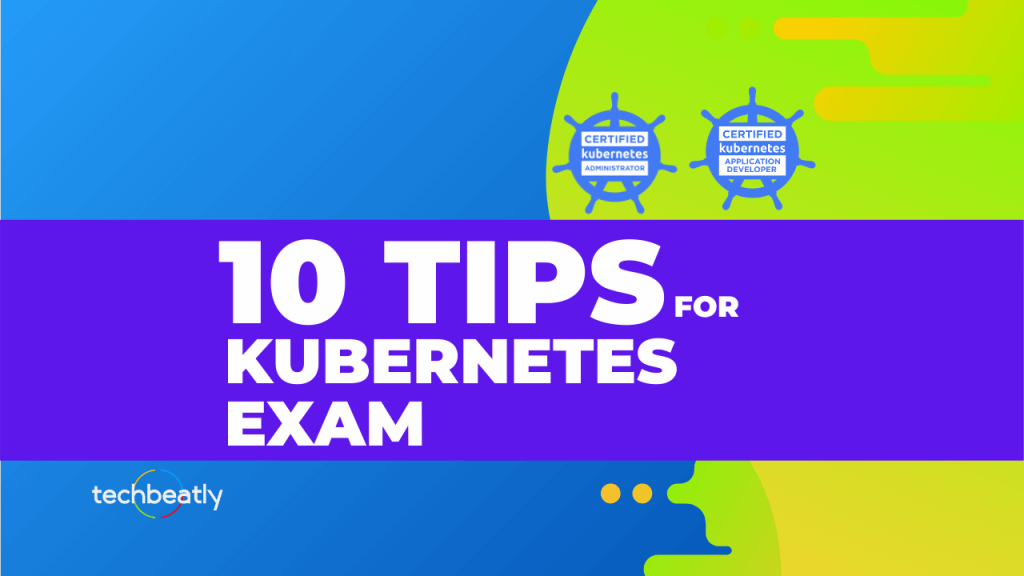
Since Kubernetes is getting wide acceptance, Kubernetes Certification is one of the most trending certifications in the IT circle now; both Certified Kubernetes Administrator (CKA) and Certified Kubernetes Application Developer (CKAD).
I have completed both recently; somewhere in March – April this year, and I started getting a lot of queries and doubts regarding the certification and other preparation details. So I thought to publish an article in my blog and do this video with each and every details.
Still thinking where to start ? Read Certified Kubernetes Administrator (CKA) & Certified Kubernetes Application Developer (CKAD) – Learning Path and Certification.
So, the details and tips are from my experience and hope it will be useful for your exam preparation. First of all, this is purely a practical exam and DO NOT expect any multiple choice questions.
Book your exam now : CKA | CKAD
Warning !!! Tips are tips, still you need to do your part by practicing and understanding all required kubernetes tasks and definitions.
#1. Practice, Practice, Practice…
Focus on the course and do all practice labs during the course itself; do your practice labs and mock exams multiple times; again and again, until you feel that you can solve the questions without any help.
#2. Be familiar with kubernetes documentation portal
As you know, these are open book exams; means you can access kubernetes documentation, during the exam for reference; yes one browser tab for exam and another tab for kubernetes.io/docs. Learn kubernetes and understand it; don’t try to memorize it.
#3 Be a kubectl expert
Learn all possible options with kubectl command line interface. You can create most of the objects in an imperative way using kubectl command. And you can use these imperative kubectl commands for creating declarative definitions and keep as yaml files.
#4 Create objects with YAML files and Re-Use it
As I mentioned earlier, use kubectl imperative commands for creating object definitions. For example, you can use -o yaml with –dry-run for kubectl commands and redirect the output to a yaml file. Later re-use the same for creating objects.
#5 Manage your time and solve questions wisely
The Certified Kubernetes Administrator (CKA) exam is 3 hr and you need to attend 24 questions; and the Certified Kubernetes Application Developer (CKAD) exam is 2 hrs with 19 questions. Try to attend the easy questions first; yes some of the questions will be simple and straightforward. Attend those and mark it.
If you feel the question is a bit tough, don’t worry, just give a try. If it’s taking more than 5 minutes but you cannot solve the question or you don’t have any idea what to do… okay you must understand that, it’s not a good time to spend your valuable minutes on that question. Mark that question and move on; there will be more and more easy questions which you can solve quickly.
#6 Learn JSONPATH
Learn JSONPATH and be proficient to use it because you may need to format your output using JSONPATH queries. Again, thanks to Mumshad and KodeKloud; there is a FREE course from KodeKloud on YAML and JSONPATH by which you can easily understand the usages; try all those FREE labs and make sure you are comfortable with jsonpath.
#7. Search for Resources NOT for Exam Dumps
I am telling you, DO NOT waste your time by searching for kubernetes questions and samples on the internet; use that valuable time for practicing the available lab and reading kubernetes documentation. It will help you a lot.
#8. Read about exam environment
Refer to the Candidate Handbook and see the details about exam setup. There are instructions on what are the allowed tools, available text editors, how to copy-paste, other short keys to be used etc.
Eg: Ctrl+Ins / Shift + Ins combination can be used on Windows or ⌘+C to copy and ⌘+V to paste on Mac.
#9. Try to do Kubernetes the Hard Way
Okay, this is not a mandatory task but it would be great if you can do this at least once; not really needed for Developer Exam. By doing this, you will learn what are the components inside and how all those components are talking to each other.
You may try the one based on GCP by kelseyhightower or the alternative VirtualBox setup by Mumshad.
#10. Setup your text editor for handling YAML
Since you need to play a lot with yaml and configuration files, use your text editor wisely. As we know, indentation and spacing are very important in yaml files and even an extra space will break your configuration and put you in trouble during exams. You can easily adjust vim editor by configuring features tabs, tabstops, expandtabs etc and it will help you to handle yaml files in a better way.
These are simple settings you can do within the first 5 minutes of exam, before you start working on questions.
Refer below video for more details.
All the best
